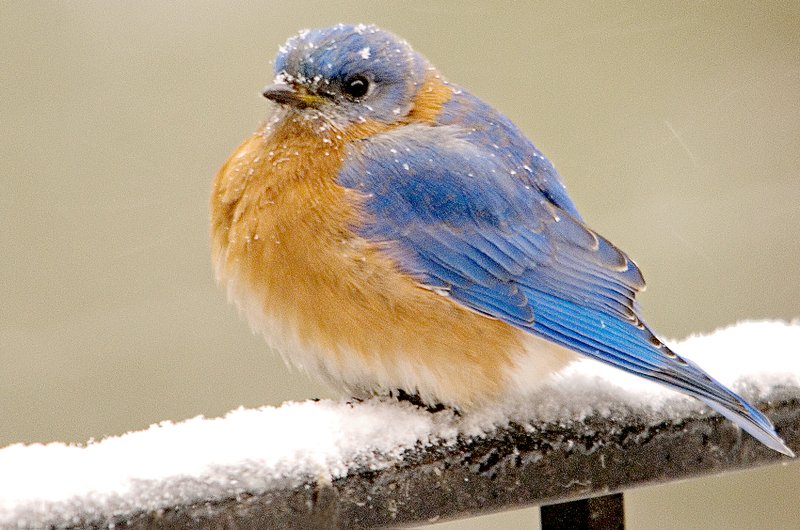Jim Janssen, president of the Bella Vista Bluebird Society, told the half-dozen people attending the spring meeting of the society that the group has a long history in the community he calls the Bluebird Capital of the United States.
The organization, which is seeking new members to help with its bird count and maintain nesting boxes, had 25 boxes on the Country Club Golf Course in 1980. By 2012, the number of nesting boxes has grown to 415 all over Bella Vista.
Last year, the group lost 30 to 35 boxes due to the three floods, but still fledged 1,801 bluebirds.
Currently, 90 percent of the boxes in Bella Vista have eggs or babies, he said. The birds are a little late in nesting this year, he added.
The goal of the North American Bluebird Society is to put up nesting boxes to help cavity-dwelling birds, which also include chickadees and wrens.
Janssen noted that in 1981, the Shakespeare Society decided all the birds mentioned in William Shakespeare's plays should inhabit the United States. The only bird not in the U.S. was the starling, which was introduced with several hundred birds that now number in the billions.
In addition, the English sparrow was imported to take care of a caterpillar infestation in New York in the 1930s.
Both are enemies of cavity-dwelling birds, especially the English sparrow, he said.
The NABS started putting up nesting boxes to increase the number of bluebirds after the predator birds took a toll on their population.
There are three types of bluebirds in the United States: the Eastern bluebird, which populates the eastern half of the country, including Bella Vista; the mountain bluebird, found in the Rocky Mountain area; and the Western bluebird, which lives along the West Coast.
Bluebirds usually will nest one to three times during the spring and summer. They eat 1,500 to 1,800 insects a day.
"That's why we have so many (nesting boxes) on the golf courses," Janssen said of the bluebird's insect eating ability.
The bluebird nesting boxes can be found at eye level atop 6-foot T-posts on the golf courses, he said. Tree swallows also like to take over the nesting boxes, so members sometimes will place two boxes 10-15 feet apart so both species can nest. The two species are very compatible.
The males usually pick out the nest site and then the pairs will build a nest. The female will lay one egg a day, up to six eggs. Then 10 days after the last egg is laid, the first egg will hatch. The bird will fly from the nest 12-16 days after hatching.
Society members will check the nests about once a week from mid-March to mid-October. If they find sparrows in the nesting boxes, they will wait until the sparrows have laid their eggs and then destroy the nest and eggs.
The nests are monitored and maintained to prevent problems from snakes, raccoons, squirrels and sparrows, to maintain a clean nesting house and to get a count on the numbers of birds, Janssen said.
Steve Holderness, who moved to Bella Vista in October from California, attended the meeting and said he was interested in helping take care of the nesting boxes.
Although he is physically limited to what he can do, Holderness, an educated research biologist, said he wanted to see what he was capable of doing and help where he could.
For more information, contact Janssen at 479-855-4451.
General News on 04/23/2014

